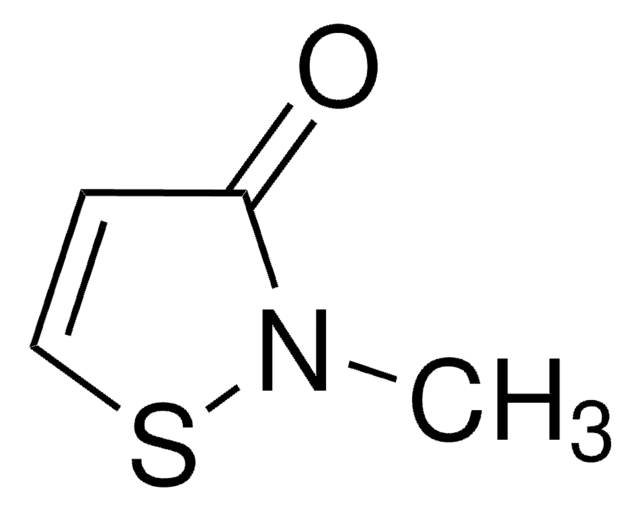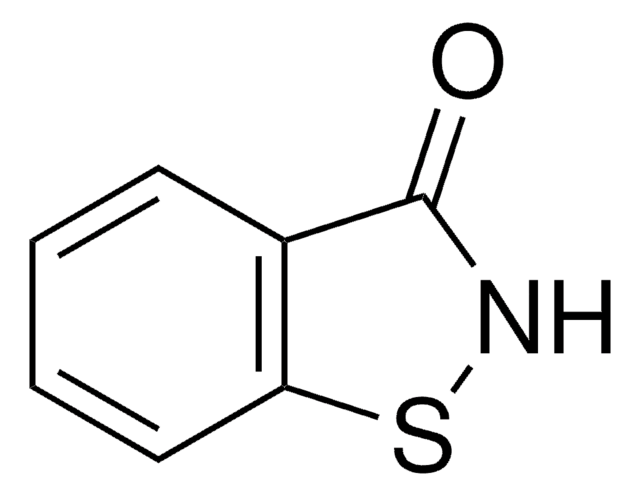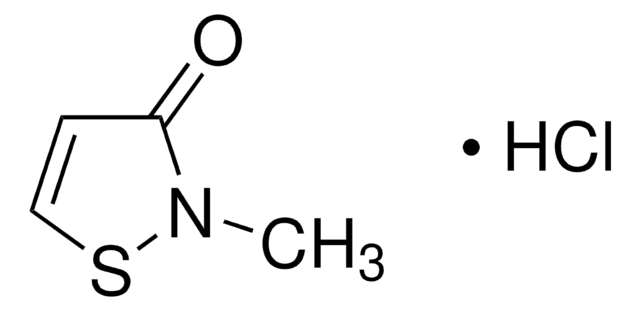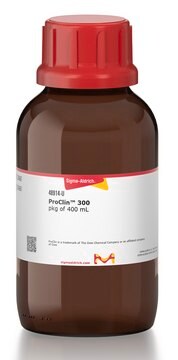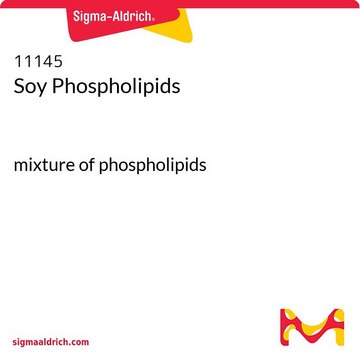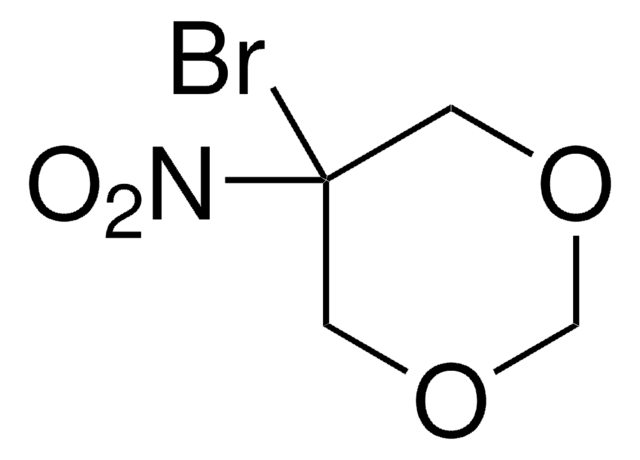725765
2-Methyl-4-isothiazolin-3-one
95%
Sinônimo(s):
2-Methyl-3(2H)-isothiazolone
About This Item
Produtos recomendados
Nível de qualidade
Ensaio
≥94.0% (GC)
95%
Formulário
lumps
Impurezas
≤5% water
cadeia de caracteres SMILES
CN1SC=CC1=O
InChI
1S/C4H5NOS/c1-5-4(6)2-3-7-5/h2-3H,1H3
chave InChI
BEGLCMHJXHIJLR-UHFFFAOYSA-N
Procurando produtos similares? Visita Guia de comparação de produtos
Aplicação
- Insights into the mechanisms of within-species variation in sensitivity to chemicals: A case study using daphnids exposed to CMIT/MIT biocide.: This study investigates the differential sensitivity of daphnids to 2-Methyl-4-isothiazolin-3-one, highlighting the biochemical mechanisms underlying these variations. The findings provide crucial insights for environmental safety assessments (Kim et al., 2023).
- Effects of the biocide methylisothiazolinone on Xenopus laevis wound healing and tail regeneration.: The study assesses the impact of 2-Methyl-4-isothiazolin-3-one on regenerative processes in amphibians, contributing to the understanding of its biological effects and potential toxicity (Delos Santos et al., 2016).
- T cell lymphomatoid contact dermatitis: a challenging case and review of the literature.: This review includes discussions on 2-Methyl-4-isothiazolin-3-one-induced contact dermatitis, providing valuable information for dermatological applications and safety assessments (Knackstedt and Zug, 2015).
Palavra indicadora
Danger
Frases de perigo
Declarações de precaução
Classificações de perigo
Acute Tox. 2 Inhalation - Acute Tox. 3 Dermal - Acute Tox. 3 Oral - Aquatic Acute 1 - Aquatic Chronic 1 - Eye Dam. 1 - Skin Corr. 1B - Skin Sens. 1A
Perigos de suplementos
Código de classe de armazenamento
6.1A - Combustible acute toxic Cat. 1 and 2 / very toxic hazardous materials
Classe de risco de água (WGK)
WGK 3
Ponto de fulgor (°F)
Not applicable
Ponto de fulgor (°C)
Not applicable
Equipamento de proteção individual
dust mask type N95 (US), Eyeshields, Faceshields, Gloves, type P3 (EN 143) respirator cartridges
Escolha uma das versões mais recentes:
Já possui este produto?
Encontre a documentação dos produtos que você adquiriu recentemente na biblioteca de documentos.
Os clientes também visualizaram
Nossa equipe de cientistas tem experiência em todas as áreas de pesquisa, incluindo Life Sciences, ciência de materiais, síntese química, cromatografia, química analítica e muitas outras.
Entre em contato com a assistência técnica